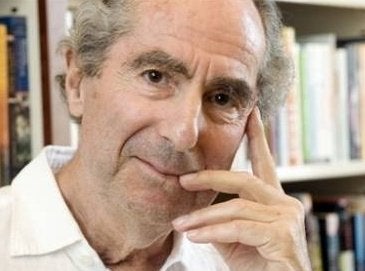
Two years after Nathan Zuckerman takes his leave from Philip Roth's literary stage in Exit Ghost, we get a new protagonist cast in a similar fictive role. Roth's latest novel, The Humbling (Houghton Mifflin, 2009), is a wonderful, slim volume that touches upon a slew of themes the aging author has been grappling with for some time: art and artifice, performance of the self, and the reality of old age. In three fantastic acts, the reader is thrown into a dramatic maelstrom, which has but one Chekovian outcome that raises entirely novel questions.
Like Gregor Samsa, we meet Simon Axler at the start of his transformation -- rather than waking up a giant insect, Axler has ceased to be a good actor. The opening lines of the book read: "He'd lost his magic. The impulse was spent." What ensues is a series of plot points that should be familiar to readers of Roth, a failed psychoanalytic cure, a divorce, a trip to a mental institution. In fact, the first act of this tragedy reads almost like a travesty of Roth's own oeuvre: of course Axler's wife flees to California and of course Axler is too cowardly to follow her departure with suicide, "the gun as sequel to the wife." Axler commits himself to the hospital fully acknowledging that he never intended to go through with suicide. The script of his life has taken precedence over his psychic reality. In this section, Roth also mocks a certain didactic tick that has preoccupied much of his later work, the notion of self as performance, the artifice of identity. When instructed, like a kindergartner, to draw a picture with crayons, Axler draws a picture of himself drawing a picture: "A picture [...] of a man who has broken down and who commits himself to a psychiatric hospital and goes to art therapy and is asked by the therapist to draw a picture." Enough with the postmodern pyrotechnics! One feels inclined to yell at the opening of this book, we've read it in Exit Ghost and we've read it in The Counterlife, give us something new!
And something new is exactly what follows in the succeeding two acts, "The Transformation" and "The Final Act." Axler has returned from the mental hospital and started a relationship with a former lesbian, Pegeen Mike, one of the most vividly perplexing characters Roth has portrayed. I won't ruin the surprises Roth plants in the plot of these two sections but urge readers to discover them for themselves. More generally, what ensues is a recapitulation of many of the problems Roth has been dissecting throughout his works, but through a more nuanced and fresher lens. Rather than get bound up in reflexive musings on the nature of the artist, Roth takes a stab at identity in the realm of gender and sexuality. At the heart of this book are questions about how we play our gendered selves and how these performances add to or detract from our power. I hope that those readers who have criticized Roth for his apparent misogyny will at least pick up this book and re-engage with the new dialogue he has set out.
Though touted in English departments around the country, Philip Roth remains one of our most consumable writers -- his prose is direct and his storylines are gripping. And while some have come by the Nobel Prize more easily than Roth has, The Humbling is evidence of Roth's ability to evolve and remain an important presence in contemporary American fiction.